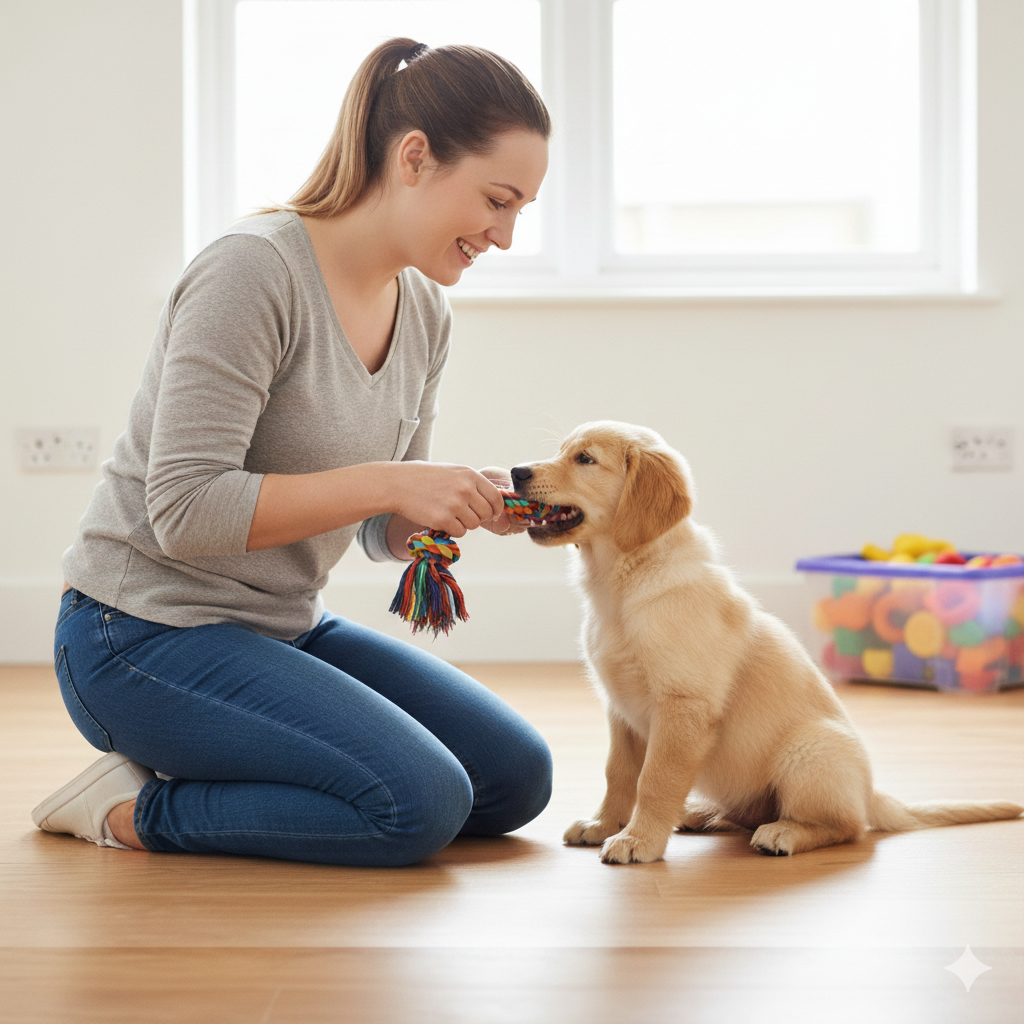How to stop puppy biting
What you’ll need:
Different-textured toys
Puppy biting is a normal and important part of their development, though it can be painful and frustrating for human owners. Puppies use their mouths to explore the world and they also learn bite inhibition—how to control the pressure of their bite—through interactions with their littermates. As their new “family”, you need to teach them how to interact with humans.
Puppies bite for several reasons:
Exploration: Dogs learn and explore through their noses and mouths.
Teething: Just like human babies, teething is painful for puppies and biting on something firm soothes their pain. This is completely natural behavior, but we want to redirect destructive biting.
Play: Play biting is a form of communication and is how they learn the limits of their bite with other puppies.
Overexcitement or tiredness: An overstimulated or tired puppy might resort to biting and nipping to release energy.
1. Teaching bite inhibition
This method mimics how a littermate would react to a hard bite and is a crucial first step in teaching your puppy to control the force of their bite.
When your puppy bites you, give a high-pitched “ouch” sound. This should startle them and make them stop. As soon as they stop, ignore them for 10-20 seconds to teach them that biting means the fun stops.
After your pause, as long as your dog is calm and quiet, return and resume playing. If they bite again, repeat the process.
As your puppy gets the hang of it, yelp for softer and softer bites to teach them to have a very gentle mouth.
2. Redirection
Prevention and redirection are key to managing puppy biting. Rotate a variety of toys with different textures—rubber, rope, plush—and utilise frozen or stuffed Kongs to ease teething.
Your puppy likely exhibits signs that they are going to bite, such as pouncing, staring at your feet or getting bouncy. When you notice these signs, immediately offer a toy. When they go for it, praise them enthusiastically and engage them with tug-of-war or a game of fetch, making the toy more enticing than your fingers.
3. Manage the environment
Avoid waving your fingers in their face to entice play, as this encourages them to see your body as a chew toy. Loose-fitting clothes, ties and shoelaces can be irresistible to a puppy, so avoid wearing them while your puppy is in their biting phase.
4. Reinforce calm behaviour
Take every opportunity to praise and reward calm and gentle behaviour. When they are playing nicely with a toy or lying quietly, give them praise or a small treat. This reinforces the behaviours you want to see.
Most puppies will respond to these methods, but if the biting is persistent, severe, or escalating into aggression like snarling or growling, consult a certified dog trainer or a veterinary behaviourist.
By focusing on positive reinforcement and consistent redirection, you can teach your puppy appropriate boundaries and prevent biting from becoming a long-term problem. Remember, patience and rewarding good behaviour are the most powerful tools you have. This approach not only solves the immediate problem but also builds a foundation of trust and respect with your dog that will last a lifetime.
Check out our other blogs in our puppy training series:
Join the waitlist for early access to Sit Happens. We’re building the ultimate dog training app to make dog training easier and more fun than you can imagine.
